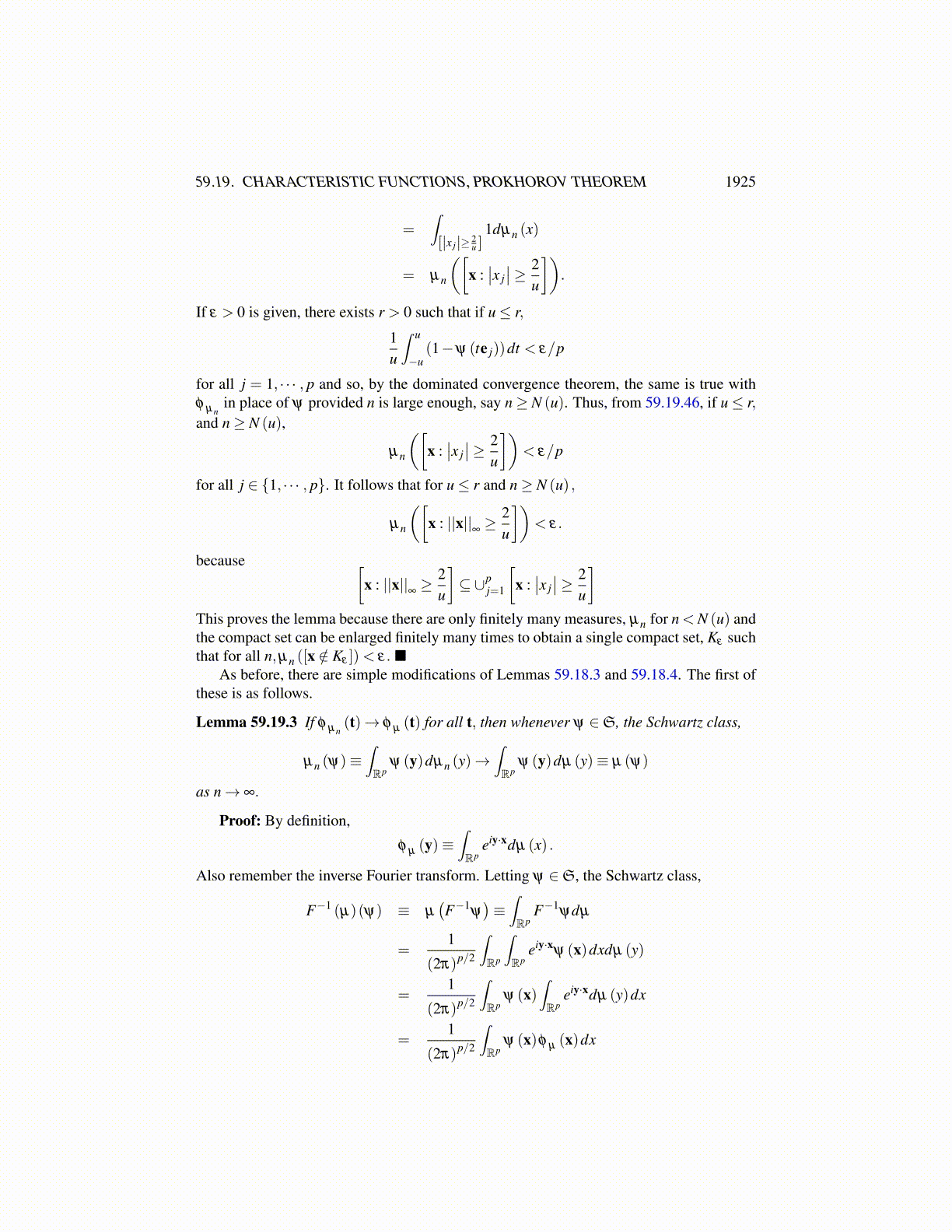
59.18. THE CENTRAL LIMIT THEOREM 1925
which converges to 0 as n→ ∞ by the Dominated Convergence theorem. Therefore,
limn→∞
∣∣∣∣φ Zn(t)−
(1− t∗Σt
2n
)n∣∣∣∣= 0
and solimn→∞
φ Zn(t) = e−
12 t∗Σt = φ Z (t)
where Z∼Np (0, ). Therefore, FZn (x)→ FZ (x) for all x because Rx ≡∏pk=1(−∞,xk] is a
set of λ Z continuity due to the assumption that λ Z≪mp which is implied by Z∼Np (0, ).This proves the theorem.
Here is the proof of the little inequality used above. The inequality is obviously trueif n = 1. Assume it is true for n. Then since all the numbers have absolute value no largerthan one, ∣∣∣∣∣n+1
∏i=1
zi−n+1
∏i=1
wi
∣∣∣∣∣ ≤∣∣∣∣∣n+1
∏i=1
zi− zn+1
n
∏i=1
wi
∣∣∣∣∣+
∣∣∣∣∣zn+1
n
∏i=1
wi−n+1
∏i=1
wi
∣∣∣∣∣≤
∣∣∣∣∣ n
∏i=1
zi−n
∏i=1
wi
∣∣∣∣∣+ |zn+1−wn+1|
≤n+1
∑k=1|zk−wk|
by induction.Suppose X is a random vector with covariance Σ and mean m, and suppose also that
Σ−1 exists. Consider Σ−(1/2) (X−m)≡ Y. Then E (Y) = 0 and
E (YY∗) = E(
Σ−(1/2) (X−m)(X∗−m)Σ
−(1/2))
= Σ−(1/2)E ((X−m)(X∗−m))Σ
−(1/2) = I.
Thus Y has zero mean and covariance I. This implies the following corollary to Theorem59.18.8.
Corollary 59.18.9 Let independent identically distributed random variables,{X j}∞
j=1
have mean m and positive definite covariance where −1 exists. Then if
Zn ≡n
∑j=1
−(1/2) (X j−m)√n
,
it follows that for Z∼Np (0,I) ,FZn (x)→ FZ (x)
for all x.